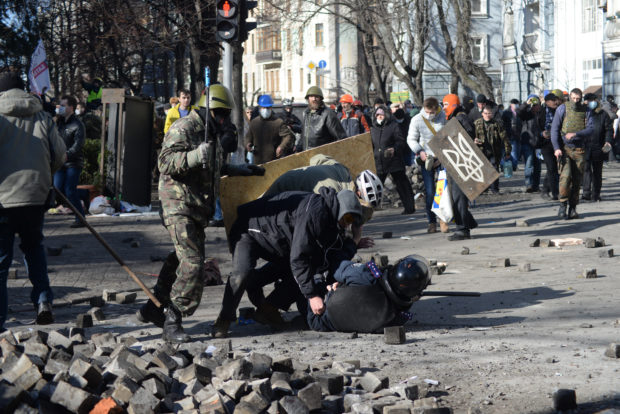Written by: Greg Ellifritz
On Monday I wrote and article about How to Help a Cop in a Life-Threatening Struggle. The article was well received and generated a lot of comments and questions. One of the most common questions was:
“The article provided good options for an armed individual to assist an officer in trouble, but I don’t have a CCW permit. Is there anything an UNARMED individual can do to help?”
It’s an excellent question. First of all, I would commend anyone for even thinking about wading into the fray to help an officer in life threatening danger. Doing so while unarmed is even more admirable. There are a few things that an unarmed rescuer can do to help….
Don’t make things worse. Heroically jumping into a gunfight when you are unarmed isn’t likely to yield positive results. If you get killed, you won’t be helping the officer at all. In fact, it may be detrimental to the officer because the medics might decide to transport your injured body to the hospital before the officer if only one ambulance is available.
No one wants you to execute a suicide mission. If shots are being fired, seek cover. Only consider engaging the criminal if you notice that his weapon is empty or he has experienced a malfunction and his gun won’t work. Even then, it’s extremely dangerous to take on the attacker while unarmed.
If you feel comfortable physically intervening, do so. If the cop is physically struggling with an attacker, feel free to help if you can do so. I’ve accepted help from bystander citizens in struggles with criminals several times in my career. As I stated in Monday’s article, identify yourself and ask the officer for help before you engage.
One other thing… if you are unarmed, don’t try to access any weapons on the officer’s belt, even if you know how to use them. The officer won’t know if you are trying to help him or if you are the attacker’s accomplice. Reaching for the officer’s pepper spray/baton/Taser/gun will lead to a situation where the officer will escalate force and may cause you or the attacker to get unnecessarily injured.
If you don’t feel comfortable assisting by yourself, get some help. Many times when an officer is attacked, a small crowd of people will gather. The bystanders may want to help, but may not know what to do or may not want to be the first person to jump into the struggle. Even if you are not physically able to take on the attacker by yourself, you may be able to recruit some help from the crowd if you take the initiative.
Tell the crowd “That officer needs help!” and then grab some folks and see if they will join the fray. Often times all people need is a little encouragement and they will be more than willing to offer assistance.
If you can’t do anything, call the police, get a good description, and record the incident on video. If you aren’t capable of physically intervening, make sure that you or someone else calls the police. When the dispatcher answers the phone, provide your location and tell them that “an officer is in trouble.” Give details if asked. The “officer in trouble” call will get the officer help the quickest. Make sure you ask the dispatcher to send an ambulance as well. The officer (or the suspect) may need one by the time the fight is over. Getting one started to the scene as early as possible ensures it will be there when needed.
Providing police with an excellent description of the attacker will ensure that he is caught if he tries to escape. The most important elements of the description to concentrate on are the attacker’s physical description (race, age, and clothing description), vehicle description (color, make, model, license plate number), and direction of travel. If the criminal flees, providing this information will be extremely useful to responding officers.
Getting video of the incident on your cell phone will also help police. It will both help to identify the assailant and provide evidence against him at his trial should he be apprehended. If you can do nothing else, get yourself to a safe location and turn on your video camera.
Provide medical attention. After the incident is over, help the officer if you can. Stop any severe bleeding. Put the officer in the recovery position if he is unconscious. Make sure no members of the gathering crowd steal any of the officer’s weapons from his gunbelt or the ground. The officer’s cruiser should be nearby. Almost all cruisers will have a medical kit and or AED in the trunk. Use it if the officer asks you to or if he is unconscious and needs medical assistance.
Even if you are unarmed or physically incapable of fighting, you can still take valuable actions to help an officer in trouble. You will have my eternal gratitude if you make an effort to do so.
Special thanks go out to the Short Barrel Shepherd whose question prompted this article series.

